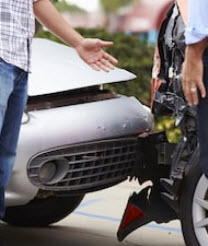For as long as there have been negligence claims, insurance companies have tried to shift blame onto the victims. This trend began around 1900. As there were no federal safety standards at the time, many factories and cars were very dangerous. Defendants started calling job injuries and car crashes “accidents.” The word shifted focus away from their dangerous products and onto the workers or drivers.
This language use persists today, and so does the legal defense it spawned. Indeed, the contributory negligence defense and its progeny are the most common legal defenses in Florida car crash cases.
The Contributory Negligence Defense in Florida
In many cases, first responders assign fault to one driver, and only one driver. But in other cases, both drivers were at fault. For example, perhaps Driver A made an illegal lane change and Driver B was speeding. Fact patterns like this one give rise to the contributory negligence defense.
To raise this defense, the insurance company must first convince the judge that the legal doctrine may apply to the facts of the case. There must be actual shared fault, not theoretical shared fault. Perhaps Driver A’s “illegal turn” was really a lane change forty-nine feet before an intersection (the law says such maneuvers are illegal within fifty feet). Or, maybe Driver B was travelling 31mph in a 30mph zone. Most Florida judges would not allow the defense in these cases. The comparative fault is simply too remote.
Next, insurance company lawyers must convince the jury that the division of fault was significant. Expect to hear lots of testimony about the dangers of speeding, illegal lane changes, or whatever the multiple fault involved.
Florida is one of only a few pure comparative fault states. Even if the victim was 90 percent responsible for the crash, the victim still receives a proportional share of damages. In direct contrast, neighboring Alabama is a pure contributory negligence state. In that jurisdiction, if the victim was even 1 percent responsible, the victim receives nothing.
Beyond the Contributory Negligence Defense in Florida
At best, the comparative fault defense only reduces the amount of compensation which the victim receives. But in other cases, a similar defense could defeat the liability claim altogether.
One example is the sudden emergency defense. A scene from the movie Tommy Boy illustrates both prongs of the sudden emergency defense, which are:
- Unexpected Situation: A hood fly-up is a completely unexpected situation, the errant inclusion of a can of motor oil notwithstanding. In contrast, an event like a large pothole, stalled car, or a jaywalking pedestrian are not completely unanticipated situations. These things happen, and drivers should expect to deal with them.
- Reasonable Reaction: Tommy reacted unreasonably by driving recklessly. So, even though the hood fly-up was unexpected, the defense would not apply. Usually, a reasonable reaction is pulling over to the right side of the road and stopping.
If the sudden emergency defense applies, the tortfeasor is not liable for damages as a matter of law.
The last clear chance defense is similar. This defense often comes up in rear-end or head-on crash situations. If the victim could have avoided the crash but failed to do so, the victim, and not the tortfeasor, is legally responsible. It’s important to note that the victim must have the last clear chance to avoid the crash, perhaps by changing lanes suddenly. The last possible chance is insufficient.
Team Up with Experienced Attorneys
Insurance companies often try to use legal loopholes to reduce or deny compensation. For a free consultation with an experienced personal injury lawyer in Brandon, contact Reed & Reed. We have four area offices (St. Petersburg, Lakeland, Tampa, and Clearwater).
Resource:
ncbi.nlm.nih.gov/pmc/articles/PMC1888620/

